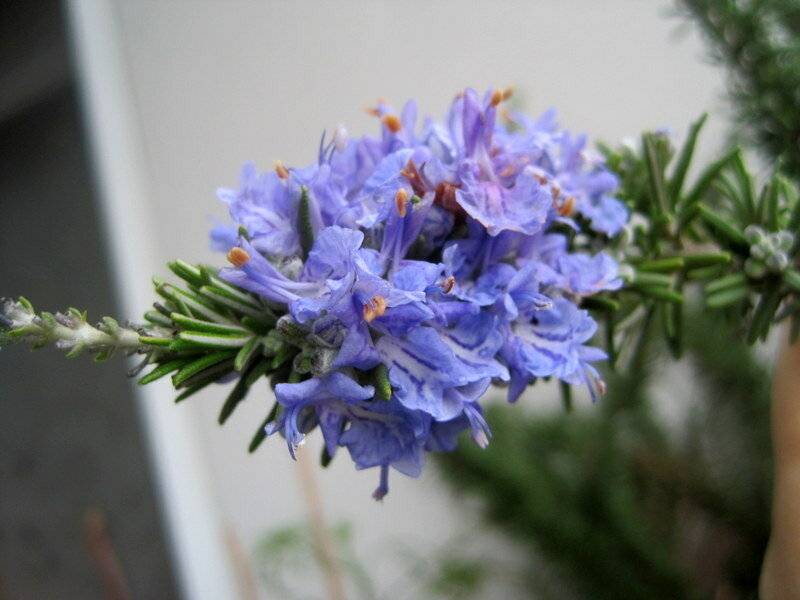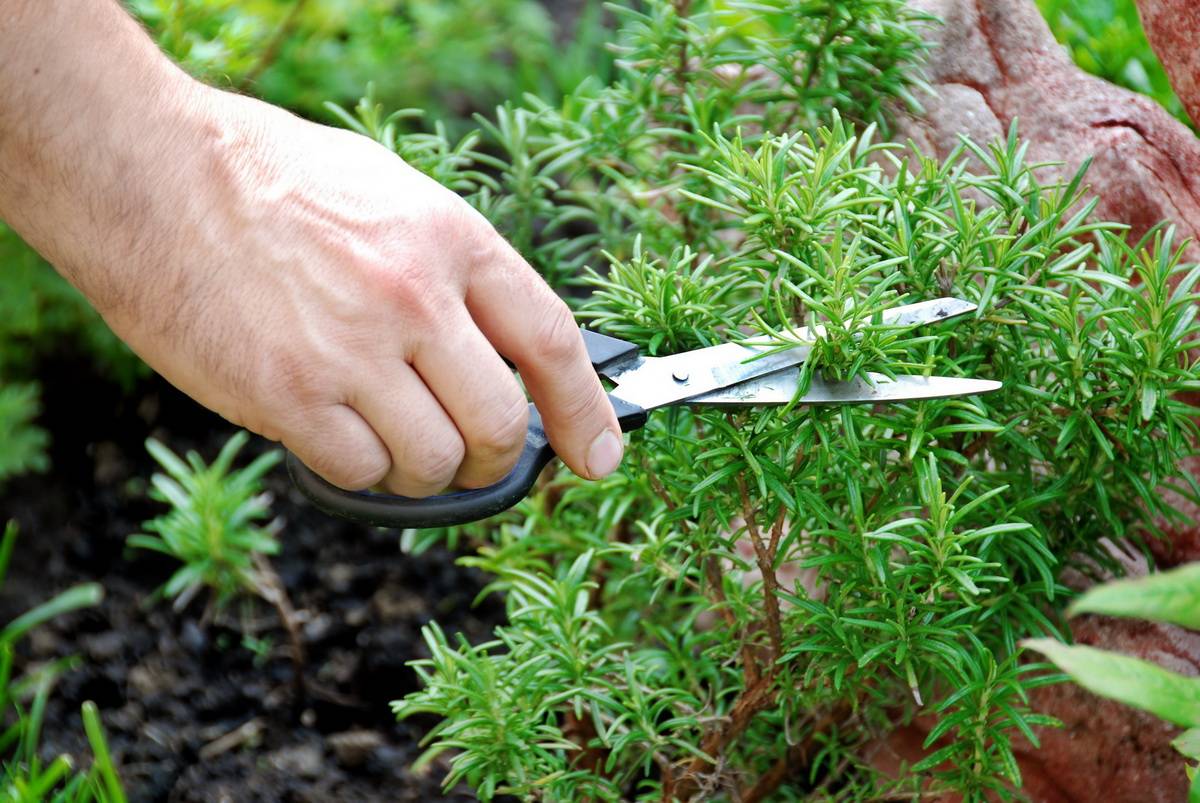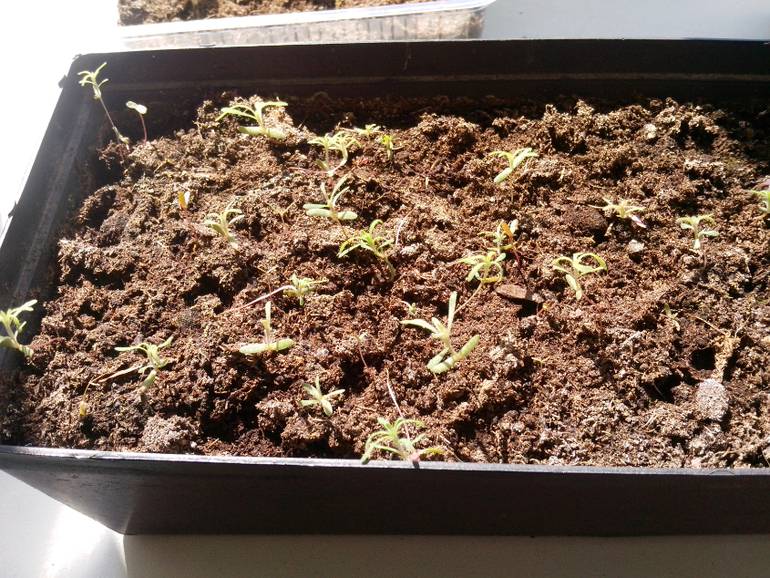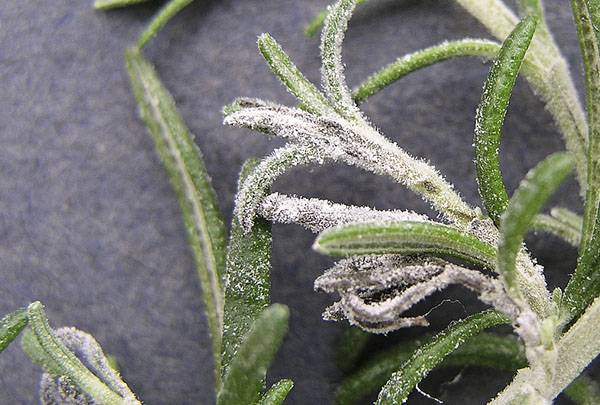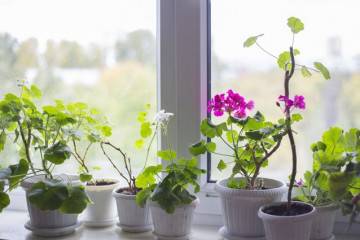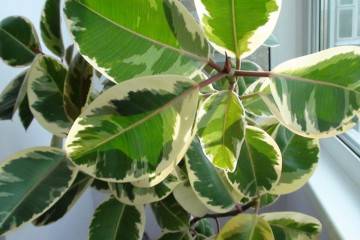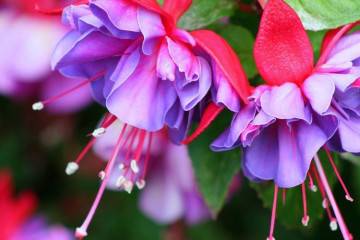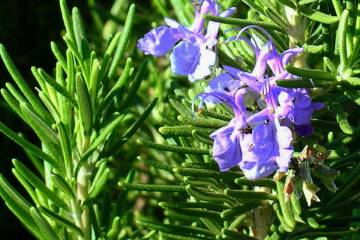Rosemary - growing in an apartment, care
Content:
To add aroma to various dishes, to make tea in the grocery store, they buy rosemary seasoning. The leaves contain essential oils, many useful substances. By purchasing a rosemary bush in a flower shop, you can use the branches for a long time in cooking, cosmetology, and traditional medicine. Below is information on growing rosemary at home in a pot.
What rosemary looks like
In nature, rosemary bushes (Rosmarinus) reach a height of 1.5 m. They consist of branches with needle-like, Christmas-tree-like leaves. In the spring, small buds are formed on the plant. Their color, depending on the variety, varies from white to purple. The culture belongs to the Lamb family.
Under indoor conditions, ordinary rosemary (medicinal) is grown. Located indoors, it grows no higher than 50-90 cm. Its branches with leaves are used as a seasoning. They give the dishes the aroma of pine needles, lemon, camphor.
Common varieties
The following varieties can be grown at home:
- Tenderness. The rosemary bush builds up a lush crown. Narrow leaves reach 3-4 cm. Flowers are small blue;
- Richard. Plant height 60-70 cm. Flowers are bluish-purple, leaves are dark green. Possesses a spicy aroma and a pronounced taste;
- Dewdrop. The height of the bush is 0.4 m. The leaves are leathery, they reach 1.5-3 cm. The branches have a strong sweetish-spicy aroma;
- Veshnyakovsky Semko. The bush is tall, in a tub it can reach 1 m. Thinns the pine aroma, has a bitter-pungent taste;
- ampelous. An ornamental shrub with hanging shoots. It can be grown in a hanging planter.
Rosemary: planting and care at home
The culture needs to be provided with an environment similar to that to which it is accustomed, being in natural conditions. And then planting and caring for rosemary at home will not be a big deal for a grower.
Temperature
The plant is thermophilic, so in summer the rosemary pots can be exposed to fresh air. There they are kept at a temperature of 24-26 ° C. For the winter, the bushes are brought into a cool room. The optimum temperature during this period is 10-15 ° C.
Keeping cool in winter promotes flowering. In the spring, they gradually accustom themselves to warmth.
Lighting
The rosemary pot is kept on the south window. A photophilous plant will lose its decorative effect and useful qualities with a lack of light. With intense lighting, the bushes should be at least 6-7 hours a day. In winter, the plants are supplemented with artificial light lamps.
Watering
In summer, potted rosemary is watered frequently and abundantly. Soft, settled water is used. Stagnation of moisture in the pot is unacceptable, therefore after 10-15 minutes. after watering, excess liquid is poured from the pan. Plants will more easily tolerate short-term overdrying than waterlogging.
Since the bushes are kept in cool conditions in winter, soil moisture is significantly reduced. Water the rosemary after the top layer of the substrate dries out.
Spraying
In summer, in extreme heat, the bushes will be grateful for spraying the crown with water from a spray bottle. If this is not done, dry air will cause the leaves to wilt.
Humidity
To increase the humidity in the room, a container filled with water is placed next to the bushes. The rosemary pot can also be placed in a tray filled with moistened small stones.
Priming
The substrate for the plant is selected loose, easily permeable to water and air. You can take soil from the garden and add the following components to it:
- leaf and sod humus;
- peat;
- sand;
- pieces of charcoal.
Top dressing
From spring to late autumn, the bushes are fed. Complex mineral fertilizers are used for ornamental plants. The nutrient mixture is added once every 2 weeks. The composition for feeding should include nitrogen, phosphorus, potassium and other micro and macro elements.
Features of winter care
In winter, the bushes are given a dormant period. Plant pots are brought into a cool room, watering is reduced. If not, the flower pots can be moved as close to the window as possible. Top dressing and transplanting are not performed in winter.
When and how it blooms
The buds are formed at the very beginning of spring. They open in April or May. The flowers are two-lipped, small and, depending on the variety, are painted in white, blue, lilac. They are collected in spike-shaped inflorescences. After flowering, seeds are formed that can be planted in the ground to propagate the crop.
Pruning
So that the rosemary does not stretch up, but builds up a lush crown, pruning is done. A sharp, disinfected knife is used for this. The branches are cut one third of the length. If the variety is undersized, then the top can be slightly pinched. The procedure contributes to the fact that lateral buds wake up, from which new shoots quickly grow.
Cut branches are used for propagation or dried. If the second option is chosen, they are washed under running water and allowed to dry. Then they are laid out on a baking sheet, having previously covered it with parchment. Put in the oven, dry at low temperature, periodically turning over the branches. Store in a tightly closed container.
How does it multiply
Cultivation of a culture is possible with seeds and cuttings. But the second method is popular among flower growers. The first method is usually used by breeders. You can grow rosemary both at home and in the garden.
Seeds
First, the seed is germinated. To do this, it is placed in gauze, moistened every day. After about 3-4 days, the seeds will germinate, after which they need to be planted as follows:
- Loose earth is poured into a box with low sides.
- Seeds are planted, sprinkled with soil.
- Spray with water from a spray bottle.
- Cover with a film, in which holes must be made for ventilation.
The container is transferred to a warm room. When the seeds hatch, the box is placed on the windowsill, the shelter is removed. The grown plants are transplanted into separate pots. Young bushes need to be looked after in the same way as adults.
Cuttings
Reproduction in this way is performed as follows:
- Cut off the apical cuttings.
- From the bottom, they are cleaned from the leaves by a third.
- Placed in a glass of water for 2-3 weeks.
- After rooting, they are planted in small pots filled with a loose substrate.
- The soil is tamped and watered.
Transfer
Immediately after purchase, rosemary is placed in a separate room for 2 weeks, where there are no other flowers. This must be done for the reason that harmful insects and disease spores can be on the bushes.
If there are any, then during the specified period they will definitely show themselves. The affected bush must first be treated, then transplanted into another pot, and only then can it be placed next to other plants.
The container is selected slightly larger than the one in which the rosemary was originally grown. A young plant is transplanted once a year, an adult - once every 3 years. Drainage from expanded clay or small stones is laid out at the bottom of the pot.
Possible growing problems
Caring for rosemary at home is simple. But due to the mistakes of the grower, the bushes can lose their decorative effect: the leaves turn yellow, wither, then fall off. This usually happens with excessive watering or, conversely, with a lack of moisture.
On weakened bushes, the following diseases and pests may appear:
- powdery mildew. With this disease, the bushes are sprinkled with white flour, as it were. To cure the plant, it is first washed with plain water, then dipped in a fungicide solution. You can use the branches for cooking only after a month;
- shield. This pest can be detected by brown dots on the leaves. The scabbard sucks the juice out of them, after which the leaf plates lose their turgor, fade. You can get rid of the pest by wiping the leaves with soapy water;
- spider mite. You can understand that this insect attacked rosemary by a thin, entangling cobweb. Starts up when the indoor air is too dry. Spider mites can be washed off with water.
Signs and superstitions
Many magical properties are attributed to rosemary. Various signs and customs are associated with it. For example, the newlyweds planted a bush in the garden and, by the way it developed, they judged the well-being of the family. Wreaths were woven from the branches, which were then hung at the head of the bed. The strong scent was believed to banish nightmares.
To improve memory, it is recommended to carry around canvas bags with dried rosemary branches. This can also drive away evil forces from yourself. Hanging bags of leaves around the house keep thieves away. In addition, the aromatic branches of the culture are widely used in folk medicine and cooking.
If you like rosemary, growing in an apartment on a windowsill is possible, just like in a garden. You need to choose a suitable variety, arrange the plant in the conditions necessary for it, and follow agricultural techniques correctly. And then it will be possible to use the twigs for the preparation of various dishes, in cosmetology and the treatment of various ailments.



